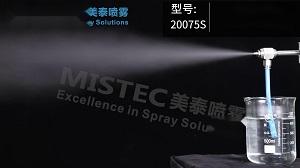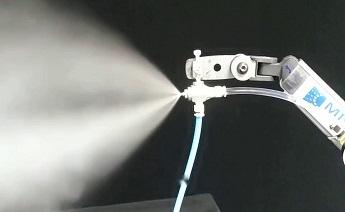
Two-fluid
atomizing nozzle is a device that atomizes liquid into small particles, which is mainly composed of two parts: gas inlet and liquid supply system.
The gas inlet is usually a set of concentric circular metal tubes that provide a high-speed airflow inside. When liquid enters this pipe from the outside, the gas snips the liquid into tiny particles and forms an atomized cloud. Due to the high and very fast speed of the liquid in the gas, the surface tension force of the liquid is weakened, resulting in smaller droplets to meet the needs of different particle sizes.

Gas-liquid mixing method
Internal mixing and external mixing are the most typical mixing forms of nozzle gas-liquid mixing, both of which are based on the energy provided by the gas to promote the decomposition of the liquid to achieve the atomization effect, and have a large number of applications in the atomization scene.
The internal mixing atomizing nozzle completes the gas-liquid mixing in the internal channel of the microchip nozzle, so that the continuous liquid is dispersed and mixed by the gas at the gas-liquid contact point of the internal channel of the chip, and at the same time, a part of the gas is dissolved into the liquid, forming a jet at the nozzle to spray smaller droplets.

The external mixing atomization method is to mix gas and liquid outside the nozzle. The two phases of gas and liquid collide with each other after ejecting from the nozzle, forming a continuous jet breaking. On the one hand, the high-speed gas will provide a continuous shear force to the liquid, and the continuous jet will form small droplets to peel off the surface of the continuous jet under the action of the gas. On the other hand, high-speed gas flow will create a negative pressure zone in the center, which can promote the fracture of the jet. With the increase of relative speed, under the action of flow instability, the size of the jet decreases, its life becomes shorter, and it quickly collapses into small droplets in the high-speed air flow.
Applications:
1.Cooling and rust removal
2.Air humidification
3.Chemical processing
4.Chemical spraying
5.Liquid spraying
6.Tobacco humidification
7.Tablet coating
8.Flue gas evaporation and cooling
9.Sterilization and Disinfection
10.Cooling parts
11.Fruit waxing or tile glazeing
12.Spraying, lubricants , etc.



